The Ten Best Science Books of 2023
From stories on the depths of the ocean to the stars in the sky, these are the works that moved us the most this year
:focal(800x602:801x603)/https://tf-cmsv2-smithsonianmag-media.s3.amazonaws.com/filer_public/54/95/5495bf57-cfac-40d7-a1ac-4fc8f56baa3e/booklist-2023-science.jpg)
In the past 12 months, record-breaking wildfires burned across Canada, and a tragic blaze swept through Maui. A piece of an asteroid landed on Earth after an epic space mission, and artificial intelligence advanced in leaps and bounds. In our oceans, a sub imploded on a fatal dive to the Titanic, and orcas gained our attention as they broke rudders off boats.
In between writing and editing articles about all of those stories, we read longer, more involved works of nonfiction. From these, we picked our ten favorites published between December of last year and this November. They range from a book about a group dedicated to rehabilitating injured turtles, to the story of a damaging wildfire that burned through a city in Canada, to a work on the amazing discoveries that have been made by scientists exploring the ocean’s depths. Check out these top science titles from the past year, selected by Smithsonian magazine’s editors and frequent contributors.
Fire Weather: A True Story From a Hotter World by John Vaillant
In a year when record-setting forest fires raged across Canada and their smoke clouded the skies across North America, and a Maui forest fire incinerated the town of Lahaina in a deadly blaze, the most harrowing book we read about climate change featured a devastating forest fire. In Fire Weather, author John Vaillant crafts a thriller about a cataclysmic inferno that burned through the town of Fort McMurray, Alberta, in May 2016. (We ran an excerpt of the book here.) The blaze generated hurricane-force winds and lightning, and entire neighborhoods burned to the ground under a type of pyrocumulus cloud usually associated with volcanoes. Roughly 100,000 people evacuated what would become the costliest disaster in Canadian history.
Vaillant’s story of Fort McMurray’s destruction illustrates a perfect storm of sorts. Fort McMurray is in the middle of Alberta’s tar sands, or bituminous sands. As Vaillant colorfully writes, “Bituminous sand is to a barrel of oil what a sandbox soaked in molasses is to a bottle of rum.” Its deposits in Canada are one of the biggest known petroleum reserves in the world, and Fort McMurray is in the energy-intensive business of recovering it, upgrading it and transporting it. The fossil fuel that comes from Fort McMurray, when burned, releases the greenhouse gases that cause climate change—and the conditions in which fires can flourish. Vaillant weaves together the story of the tar sands industry, the impacts of climate change and the white-knuckle evacuation of the town into a frightening wake-up call of our new reality concerning wildfires. —Joe Spring
Fire Weather: A True Story from a Hotter World
With masterly prose and a cinematic eye, Vaillant takes us on a riveting journey through the intertwined histories of North America’s oil industry and the birth of climate science, to the unprecedented devastation wrought by modern forest fires, and into lives forever changed by these disasters.
Of Time and Turtles: Mending the World, Shell by Shattered Shell by Sy Montgomery
Scuttling Earth for at least 220 million years, turtles have survived more than one mass extinction, including the one that offed dinosaurs. But in a geologic instant, humans have pushed more than half their 360 known species to near-extinction. And in an actual instant, animals slated to live a century or more can be killed—after their shells are crushed by cars, their mouths are snagged by fishhooks or their ponds are drained by developers.
Yet there is hope for some turtles. The Turtle Rescue League in Southbridge, Massachusetts, rehabilitates hundreds of ailing turtles each year. In Of Time and Turtles, author Sy Montgomery joins the small squad in spring of 2020, just as routine life freezes for Covid-19. The book recounts her year with the league, as they incubated eggs, injected antibiotics, mended shattered shells and returned healed patients to nature. Montgomery’s sensory-rich writing brings readers into the action: You’ll watch a cold-stunned sea turtle move “in ultra slow-mo, a toy whose batteries are almost run out”; smell a wetland “scented like pencil shavings”; and walk across “moss that cushions and squelches with every step.” You’ll bond with favorite patients like Fire Chief, a 42-pound snapper with a custom-built wheelchair, and Lucy, a tropical tortoise rejuvenated with watermelon slices. Between scenes of reptile rescue, Montgomery draws from research papers, news stories, novels and poetry to muse on turtles and the passage of time. Ultimately though, the shell-armored reptiles, “ancient, unhurried, long-lived beings,” are what help her make peace with mortality and growing old. —Bridget Alex
Of Time and Turtles: Mending the World, Shell by Shattered Shell
National Book Award finalist for The Soul of an Octopus and New York Times bestseller Sy Montgomery turns her journalistic curiosity to the wonder and wisdom of our long-lived cohabitants—turtles—and through their stories of hope and rescue, reveals to us astonishing new perspectives on time and healing.
Crossings: How Road Ecology is Shaping the Future of Our Planet by Ben Goldfarb
From the start of Ben Goldfarb’s fascinating book on road ecology, Crossings, the reader is peppered with jaw-dropping facts. Some 40 million miles of roadways encircle the Earth. While a half-century ago 3 percent of land-dwelling mammals died on a road, in 2017 that percentage had quadrupled. In 1995, researchers estimated that, in the United States, deer factor into more than a million vehicle crashes annually, injure 29,000 drivers and passengers, and kill more than 200. (We ran an excerpt of the book, with many more surprising facts, here.) And the book is engrossing for other reasons. In it, Goldfarb chronicles roads from California to Canada to Tasmania to show how they have impacted the natural world—and that includes us. He explores how roads have affected everything from butterflies to mountain lions to frogs.
His journey is not just a recounting of dismal experiences. He looks to those places where engineers have built overpasses and underpasses—and animals and humans have benefited as a result. Some of those creations are expensive, but animal crashes cost the U.S. more than $8 billion dollars a year, so fixes are in order. The Nugget Canyon underpasses, built in Wyoming, for example, prevented 95 crashes with animals annually, and so paid for themselves within five years. By citing so many interesting examples of things done right, Goldfarb invites us to contemplate a future of roads that could be much brighter, if we would just adopt an ethic, he says, in which roads embrace the land instead of conquer it. —J.S.
Crossings: How Road Ecology Is Shaping the Future of Our Planet
An eye-opening account of the global ecological transformations wrought by roads, from the award-winning author of Eager.
Starborn: How the Stars Made Us (and Who We Would Be Without Them) by Roberto Trotta
Without the stars, the history of our species would have been very different. That’s the central argument in Roberto Trotta’s engaging homage to the star-studded night sky, Starborn. The stars are more than just pretty: As Trotta shows, our efforts to understand the movements of the stars and planets (and the sun and the moon) played a crucial role in the development of navigation and precision timekeeping. In ancient Egypt, for example, the bright star Sirius was worshipped as a deity, and the start of the new year was signaled when Sirius first became visible in the pre-dawn sky. Seafaring Polynesians, meanwhile, traveled from island to island in the Pacific Ocean by memorizing the positions and movements of some 200 stars—aided by their knowledge of ocean currents, fish, birds and seaweed. Today’s most accurate timekeepers are atomic clocks, which count vibrations of a cesium atom—but even these need to be tweaked based on the sun and stars, because the Earth’s spin is gradually slowing.
But the night sky is no longer as visible as it once was. The author shows just how much we’re losing as light pollution—first from cities and industrialization and now from so-called constellation satellites like those launched by SpaceX—obliterates all but the very brightest stars and planets for millions of Earthlings. Though Trotta is a theoretical physicist, this is nothing like a textbook; rather, the author uses his own insightful observations and personal anecdotes to pay tribute to our evolving relationship with the universe. Perhaps above all, the book is a reminder to look up—and not to take that vista for granted. —Dan Falk
Starborn: How the Stars Made Us (and Who We Would Be Without Them)
A sweeping inquiry into how the night sky has shaped human history
Rough Sleepers: Dr. Jim O’Connell’s Urgent Mission to Bring Healing to Homeless People by Tracy Kidder
In Rough Sleepers, author Tracy Kidder profiles a dedicated doctor who treats Boston’s homeless. Harvard-educated physician Jim O’Connell is the founder and president of the Boston Health Care for the Homeless Program. “The Program,” as O’Connell calls it, employs roughly 400 workers to treat more than 11,000 homeless people annually. O’Connell, who refers to the unhoused as “rough sleepers,” a 19th-century British term, is called Dr. Jim by his patients. He treats them in a clinic and drives a van to meet them on the streets. He addresses everything from lice and scabies to more advanced problems that patients have following years of neglect, including large tumors and, in one case, a hernia that dropped below a man’s knees. Aside from care, O’Connell sometimes hands out his own money and gift cards.
Homelessness is an overwhelming problem with lots of causes, from poverty to drug addiction to mental illness, and battling it is difficult. O’Connell is just the last line of defense, a committed pro who, by one account, is a man at a bottom of a cliff trying to catch people after they fall off. Although Kidder briefly delves into the increasing urban homelessness problem and organizations’ attempts to fight it, this book makes our list because of the author’s flowing narrative showing the bond among Dr. Jim, his co-workers and his unhoused patients. That often-overlooked sector of society is perhaps best illustrated in the book after one homeless person dies, and people in the clinic and on the street share stories and mourn his passing. “The community of rough sleepers, usually so loose and informal,” Kidder writes, “could sometimes seem as intimately connected as mycelium under a forest floor.” —J.S.
Rough Sleepers: Dr. Jim O'Connell's urgent mission to bring healing to homeless people
Tracy Kidder has been described by The Baltimore Sun as “a master of the nonfiction narrative.” In Rough Sleepers, Kidder tells the story of Dr. Jim O’Connell, a gifted man who invented a community of care for a city’s unhoused population, including those who sleep on the streets—the “rough sleepers.”
How Far the Light Reaches: A Life in Ten Sea Creatures by Sabrina Imbler
Nature is unabashedly queer. We are surrounded by species that live outside our human experience, points of reflective contrast to our terrestrial lives. Sabrina Imbler’s scientifically steeped memoir How Far the Light Reaches revels in these differences, using an aquarium of undersea creatures as foils for significant moments in the author’s life. The preserved remains of a whale are a foil for dissecting a breakup, and our sometimes leering fascination with a marine worm called the sand striker gives form to a meditation on consent. Imbler’s essay “We Swarm,” especially, is a treasure. Squishy marine organisms called salps, which spend part of their lives in aggregations of hundreds of individuals, open a warm recollection of Pride celebrations along the New York shoreline.
Each of Imbler’s chapters is rife with scientific information about the species they’ve chosen, but the book shines as an exercise in undersea empathy. “I want to know what kinds of transformation the cuttlefish is capable of when it is motivated not by fear but by community and sex,” Imbler writes, “and I am not interested in calling it a disguise.” A creature like a cuttlefish may seem so far removed from what we know, separated by over 500 million years of history, but Imbler beautifully demonstrates that we can catch glimmers of ourselves in lives that thrive from the photic zone to the deepest depths. —Riley Black
How Far the Light Reaches: A Life in Ten Sea Creatures
A queer, mixed race writer working in a largely white, male field, science and conservation journalist Sabrina Imbler has always been drawn to the mystery of life in the sea, and particularly to creatures living in hostile or remote environments. Each essay in their debut collection profiles one such creature.
The Devil’s Element: Phosphorus and a World Out of Balance by Dan Egan
As chemicals go, phosphorus—number 15 on the periodic table—is something of a paradox. In The Devil’s Element, journalist Dan Egan explains how phosphorus is essential for all life; it can be found in every cell in your body. But it is also combustible and explosive. So-called white phosphorus is a waxy substance that spontaneously combusts when exposed to oxygen—and can cause temperatures to hit 2,370 degrees Fahrenheit. White phosphorus was the key ingredient in the bombs dropped by the Allies on Hamburg, Germany, during World War II, unleashing a firestorm that leveled the city and killed some 37,000 people.
First isolated by a German alchemist in the 1600s, phosphorus today is an essential ingredient in fertilizers; without it, millions would go hungry. But the United States may run out of phosphorus in just a few decades—a looming crisis that Egan says may rival the more talked-about shortages we may soon face with oil and water. Meanwhile, runoff from agricultural use is sending phosphorus into our lakes and rivers, leading to toxic algae blooms and rendering large swaths of water unsafe. A case in point is Florida, which holds more phosphorus deposits than any other state, but is also now plagued with smelly and even dangerous waterways, thanks to the over-use of the chemical. With a compelling mix of science, history and geopolitics, Egan illuminates our complex relationship with this enigmatic element. —D.F.
The Devil's Element: Phosphorus and a World Out of Balance
Phosphorus has played a critical role in some of the most lethal substances on earth: firebombs, rat poison, nerve gas. But it’s also the key component of one of the most vital: fertilizer, which has sustained life for billions of people. In this major work of explanatory science and environmental journalism, Pulitzer Prize finalist Dan Egan investigates the past, present, and future of what has been called “the oil of our time.”
My Father’s Brain: Life in the Shadow of Alzheimer’s by Sandeep Jauhar
Alzheimer’s disease robs a person’s memory, yes, but it also causes sweeping behavioral transformations that can include agitation and stubbornness. Those with the condition can become difficult patients, unrecognizable to their loved ones. The slow-acting and irreversible disease “is more feared than death itself,” writes Sandeep Jauhar in My Father’s Brain. After his father starts to show signs of dementia in 2014, Jauhar’s parents move states to be closer to their sons. But the close proximity does little to prevent his father’s Alzheimer’s from upending the lives of family members. Jauhar doesn’t shy away from narrating the ugly and difficult experiences of his father’s irrational behavior, which often leads to sibling fights and frustration for the author.
The book is an excellent introduction to the impacts of Alzheimer’s—on the patient and caregivers. It shines the brightest when detailing the factors that add financial and logistical challenges to families caring for the chronically ill. Millions of people care for a family member with Alzheimer’s, but Jauhar’s voice is unique; he taps into his dual identity as a doctor and son of immigrants to explore the ethics and cultural expectations of long-term care. Although the book doesn’t offer hope for a preventative or cure, readers will find comfort in Jauhar’s honesty—and, for those going through the same journey of caring for someone with Alzheimer’s, solidarity. —Shi En Kim
My Father's Brain: Life in the Shadow of Alzheimer's
A deeply affecting memoir of a father’s descent into dementia, and a revelatory inquiry into why the human brain degenerates with age and what we can do about it
The Underworld: Journeys to the Depths of the Ocean by Susan Casey
In June, the world paid more attention than usual to deep-sea exploration when OceanGate’s Titan submersible went quiet while exploring the Titanic. Later, the public learned the craft imploded. That was the rare tragic episode of deep-ocean adventures, one years in the making due to the company’s failure to test and heed warnings. But a much more awe-inspiring exploration of the deep has been taking place for decades, and Susan Casey’s enthralling book, The Underworld, documents it in stunning detail. (We ran an excerpt of the book here.) As Casey points out, though you can view maps of Mars on your iPhone, 80 percent of Earth’s seafloor hasn’t been charted in sharp detail. So much remains to be discovered, and Casey makes it a point to see what is out there by interviewing deep-sea pioneers and even heading down thousands of feet in submersibles herself. As she goes, she shares the amazing sights around her—fish that light up like a meteor shower, shrimp doing wheelies and orange microbial mats. She also chronicles the history of deep-sea exploration and details the current efforts to discover more about a world that deserves our attention now more than ever. Many companies are considering mining the seafloor for precious metals, and Casey’s book is a testament to the fact that so many beautiful and important things live down there that we should learn about before doing damage. —J.S.
The Underworld: Journeys to the Depths of the Ocean
Susan Casey is our premiere chronicler of the aquatic world. For The Underworld, she traversed the globe, joining scientists and explorers on dives to the deepest places on the planet, interviewing the marine geologists, marine biologists, and oceanographers who are searching for knowledge in this vast unseen realm.
Better Living Through Birding: Notes From a Black Man in the Natural World by Christian Cooper
In little more than two minutes captured on video in May 2020, the life of New York City birder Christian Cooper drastically changed. He saw a dog run through a forested section of Central Park and asked its owner, a white woman, to leash her pet in accordance with the law. When she refused, he began to film her with his smartphone, and as he did, she said she would call the police on him and tell them “an African American man is threatening my life.” As the racist incident came to national attention, Cooper quickly became the best-known birder in America. And, amid a hobby that is largely older and white, “the fact that that birder is Black turned heads,” Cooper writes.
With his memoir, Better Living Through Birding, the self-described “Black, gay nerd” pulls back the curtain on the rest of his life outside those two minutes. He begins with an inside glimpse into the world of Central Park birders that he entered as a child. Alongside other binocular-toting enthusiasts, he wakes up at the crack of dawn to chase rarities, like the gray-and-yellow Kirtland’s warbler, and finds beauty in the more mundane, like the iridescent sheen of a common grackle. But Cooper’s story takes readers beyond Central Park, to awe-inspiring destinations around the world, from Australia’s Uluru rock to the Everest Base Camp. He also shares experiences from inside the walls of the Marvel Comics offices, where he worked as a writer and editor, and from the streets of New York, where he protests following an incident of violence against a gay couple in upper Manhattan. Every bit of Cooper’s experience is intertwined with his appreciation for nature, and his memoir is punctuated with descriptions of birding so imbued with passion—from watching a fiery-orange Blackburnian warbler in Central Park to sprinting after chimney swifts in Selma, Alabama—that they could make even a non-birder’s veins pulse with excitement. —Carlyn Kranking
Better Living Through Birding: Notes from a Black Man in the Natural World
Better Living Through Birding recounts Christian Cooper’s journey through the wonderful world of birds and what they can teach us about life, if only we would look and listen.
A Note to our Readers
Smithsonian magazine participates in affiliate link advertising programs. If you purchase an item through these links, we receive a commission.
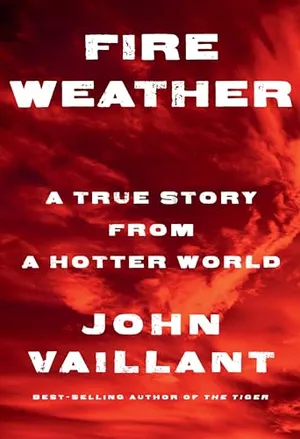
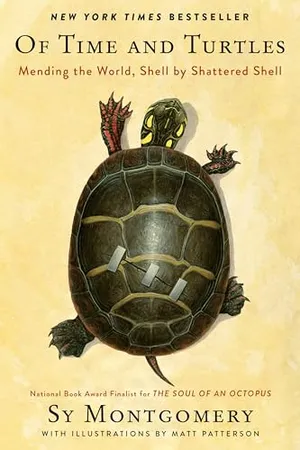
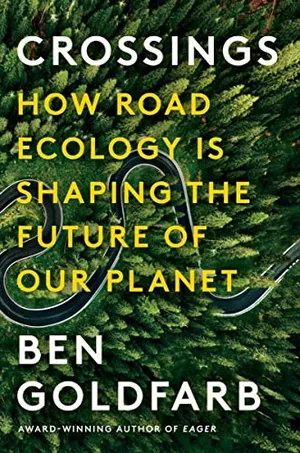
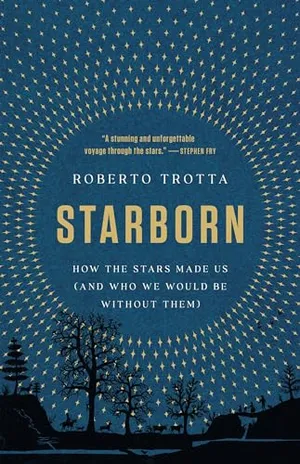
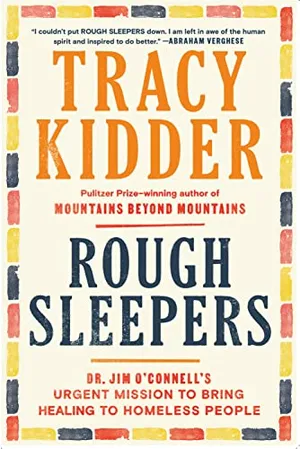
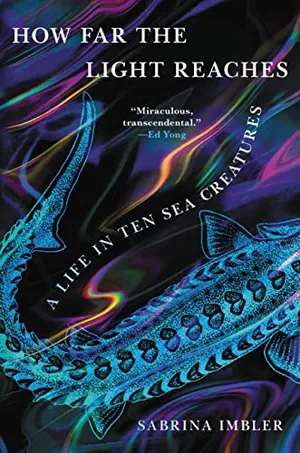
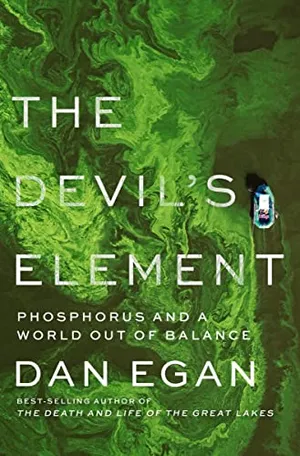
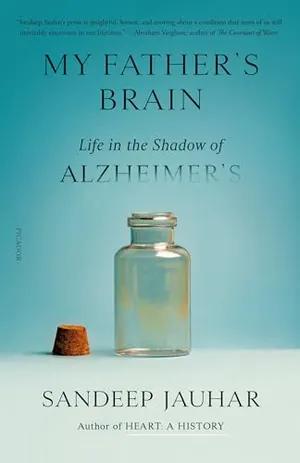
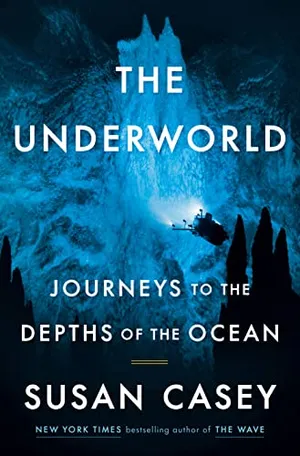
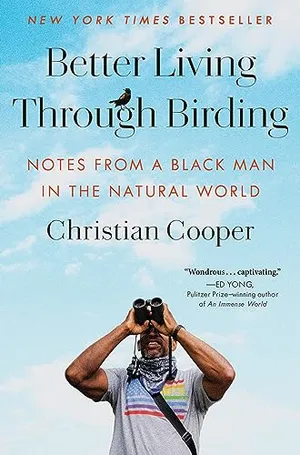
/https://tf-cmsv2-smithsonianmag-media.s3.amazonaws.com/accounts/headshot/RileyBlack.png)
/https://tf-cmsv2-smithsonianmag-media.s3.amazonaws.com/accounts/headshot/kim.png)